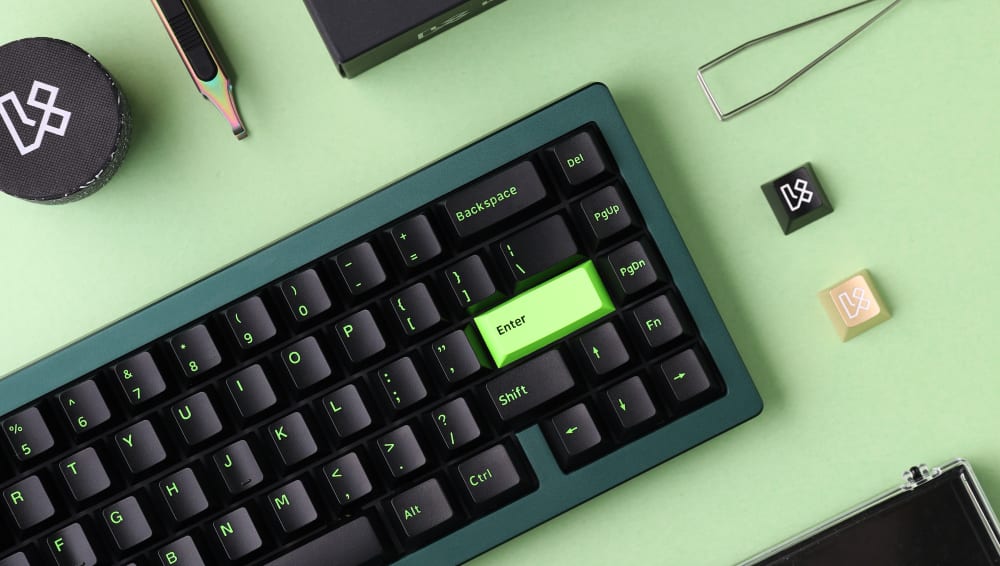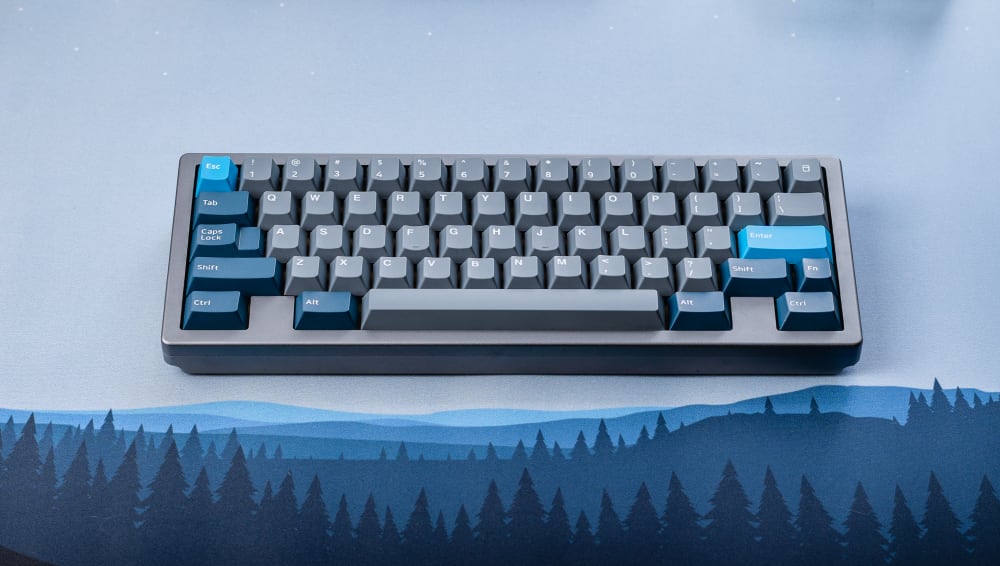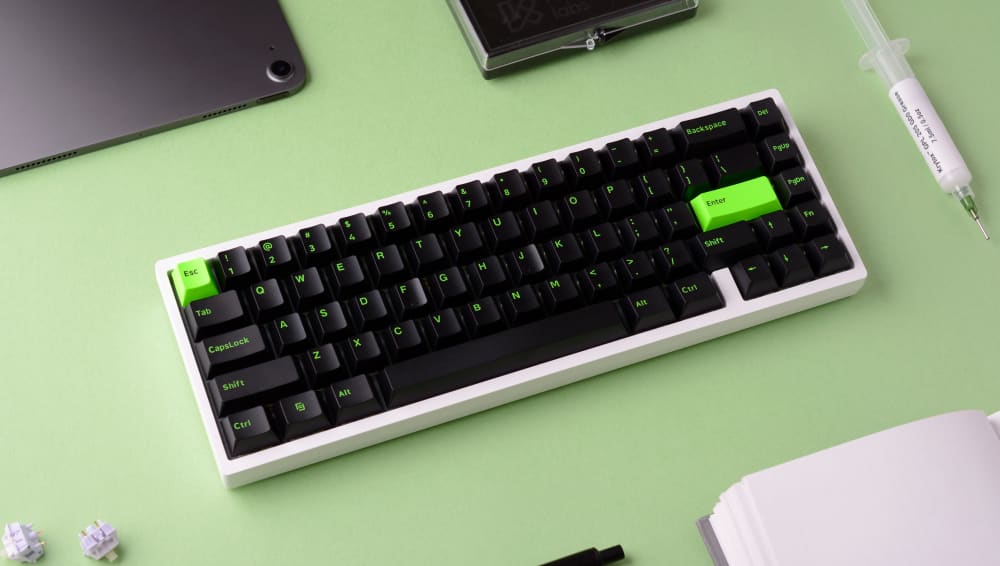Preston S.
Mar 20, 2023
•6 minutes
Mechanical Keyboard Suggestions For The Office
You spend just as much time typing on your mechanical keyboard as you do sleeping, so why not invest in improving your workspace to be as efficient as possible?


TG67 V2 Mechanical Keyboard
Mechanical keyboards for the office can come in a lot of different sizes and styles, but today we are going to be talking about some suggestions to maximize your workflow, while not having to worry about annoying everyone around you with an obnoxiously loud keyboard build.
The main thing to think about when building a mechanical keyboard specifically for office work is what layout you would like. Some people don’t need a numpad and others do depending on the type of work you are doing, so it's very important to get that down before continuing. From my experience, programmers tend to prefer smaller boards, usually 60% keyboards without arrow keys (you still get arrow keys by re-mapping a layer using something like VIA). If you don’t need a numpad, I recommend a 65% keyboard or 75% keyboard, but if you do need a numpad, a 96% keyboard is going to be the way to go because a 100% keyboard takes up a lot more room on your desk than a 96% keyboard does.


Squid60 60% WKL Keyboard
Once you have figured out what layout you are going to be working with, the next step is to decide what switches you would like. Because this is an office keyboard, I usually recommend using silent switches like the Wuque Studios Silent Linears and Silent Tactile switches so that way you don’t have to be worrying about annoying everyone around you if you are taking it in person everyday. If you are at home though and don’t have to worry about the loudness of your keyboard being an issue, then I would check out Kinetic Labs’ new Moon V2 switches because they are a good middle ground switch in terms of volume as they aren’t super loud, but they aren’t silent either. Plus you have the added benefit that they come hand lubed with Krytox 205g0 so you don’t have to worry about taking apart the switch and lubing each one to get a great sound and feel out of your keyboard.


Moon V2 Linear Switches
Once you have chosen your switches, the most fun part is choosing the keycaps. Now this is all personal preference, but I prefer to do a lot of typing on cherry profile keycaps because they are easy to feel around and know where you are on the keyboard, and they are widely available with plenty of different designs to choose from. The only thing you need to know about keycaps is that you have to make sure they fit whatever keyboard layout you are going with because not all keycap sets fit all keyboards.
Now that we have gone over everything, here is an example of what I would build to take as my go to work keyboard. I would buy the Keychron V5 keyboard kit, and use Wuque Studios Silent Tactile switches since I prefer tactiles over linears for typing, and then finally for keycaps I would use the awesome Kinetic Labs PBT Code set because my favorite color is green.


PolyCaps Code PBT Keycaps
Mechanical keyboards for the office can be quite tricky at times because you want to enjoy using the keyboard without annoying everyone around you, so hopefully I gave you all some helpful tips on what to look for when building a keyboard for your work environment. And if you're lucky enough to be working from home, feel free to build a board as loud as you'd like!
Frequently Asked Questions
Below are the most frequently asked questions I've received with regards to mechanical keyboards and office work:
- Are mechanical keyboards good for office work?
- Yes, mechanical keyboards are an excellent choice for office work because they allow you to type comfortably for long periods of time, and they last much longer than membrane keyboards. You can customize them to be silent for shared spaces.
- What is the best mechanical keyboard for office work?
- If the office is in a shared space, we recommend going with a silent mechanical keyboard so that you don't bother your co-workers. The best way to make your keyboard silent is to use silent keyboard switches.
- Are mechanical keyboards too loud for the office?
- Mechanical keyboards are not too loud for the office. In fact, you can customize your mechanical keyboards to be more silent than membrane keyboards by using silent switches, foam, and lubricants.
- Which mechanical keyboard switch for office?
- If the office is in a shared space, I'd recommend going with a silent mechanical keyboard switch, such as Gecko silent switches to minimize the sound of your board and typing.
- What are the disadvantages of a mechanical keyboard?
- Mechanical keyboards are more expensive than membrane keyboards, but due to their high quality and level of customizability, they are well worth it.
- Is 60% keyboard good for office?
- Yes, a 60% mechanical keyboard is the perfect choice for the office as it fits in any cubicle and any size desk. To use arrow keys, you can map layers and keys (such as I, J, K, L) to arrow keys.
- Are mechanical keyboards better for productivity?
- Mechanical keyboards are generally better for productivity as they make typing more comfortable in terms of sound and feel, which can lead to increased productivity.
- Are mechanical keyboards better for ergonomics?
- Mechanical keyboards are better for ergonomics because layouts can be customized to be more ergonomic, and you can choose a mechanical keyboard switch that was built for ergonomics in mind, such as Penguin Tactile Ergonomic switches.
- Is a mechanical keyboard worth it for typing
- Mechanical keyboards are ideal for typing as their feel and sound matches your preferences for typing, thus allowing you to type for long periods of time.
- Are red or brown switches better for office?
- Generally speaking, both red and brown switches are good choices for the office, but there are so many more options out there, especially if you're looking to customize your keyboard beyond conventional choices.